What to eat ETHIOPIA 🇪🇹 Doro wat with injera
In the South African paper Mail and Guardian, Marthe van der Wolf reflected on her years in Ethiopia, recalling how a friend told her, “If you can’t make doro wat, your man will eat it somewhere else.”
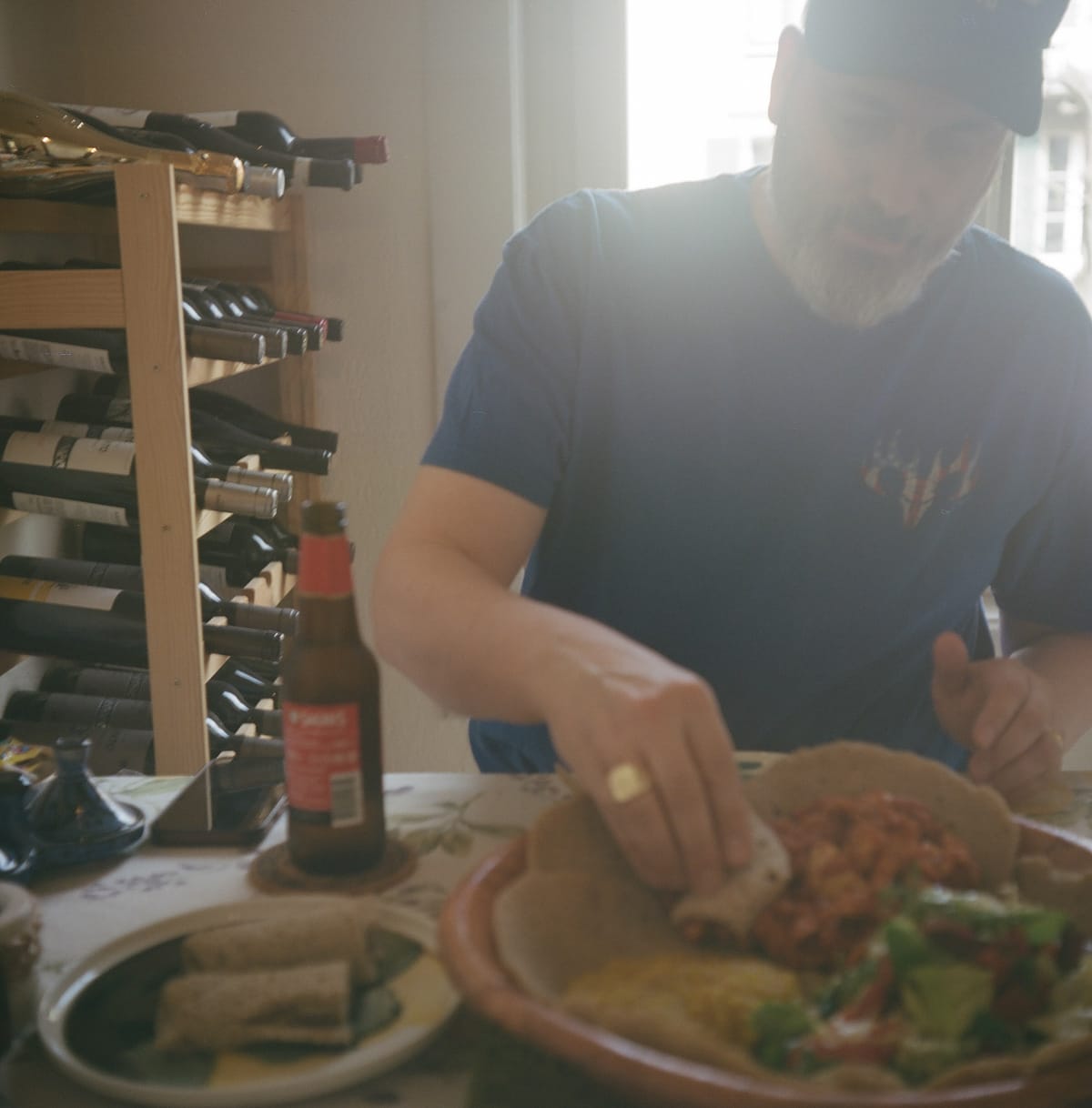
Doro wat with injera
Published June 28, 2024 · by Amanda Rivkin Häsler
Doro wat is a dish that is at the center of Ethiopians’ conception of femininity and what it means to be marriageable. The addition of an egg to chicken stew is reminiscent of how Betty Crocker went from having an unsold product in cake mix to its marketing department, on the advice of Edward Bernays, refashioning the ingredients and preparation so that women could just “add an egg” – causing the product to fly off the shelf.
According to one former assistant to the Ethiopian ambassador in Washington, “If a woman couldn’t make doro wat,” she is “not ready for marriage.” In the South African paper Mail and Guardian, Marthe van der Wolf reflected on her years in Ethiopia, recalling how a friend told her, “If you can’t make doro wat, your man will eat it somewhere else.”
Her friend added, “And no woman is going to let a man go just like that after cooking a dish for him that takes all day.”
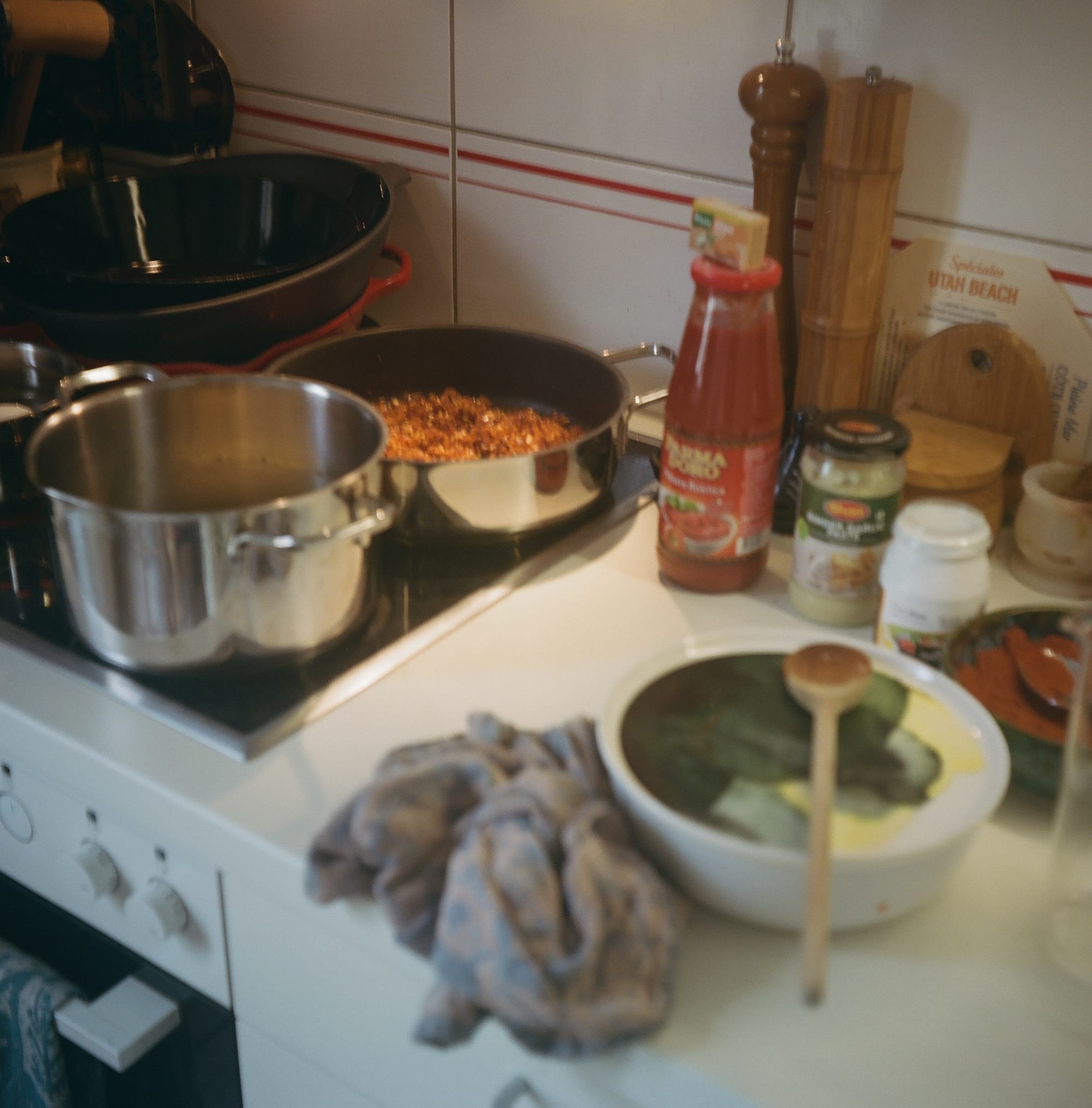
The dish itself has three essential ingredients, in addition to the eggs and chicken that define its proteins: berbere spices, a spiced, clarified butter known as niter kibbeh (ghee is subbed in many recipes including ours) and onion. The chicken is washed with lime. Prepared in the most traditional way, doro wat can take several hours if not all day to make, beginning with the slow cooking of onions until they are caramelized – a process that alone takes several hours. It is served with Ethiopia’s signature spongey pancake-like bread injera.
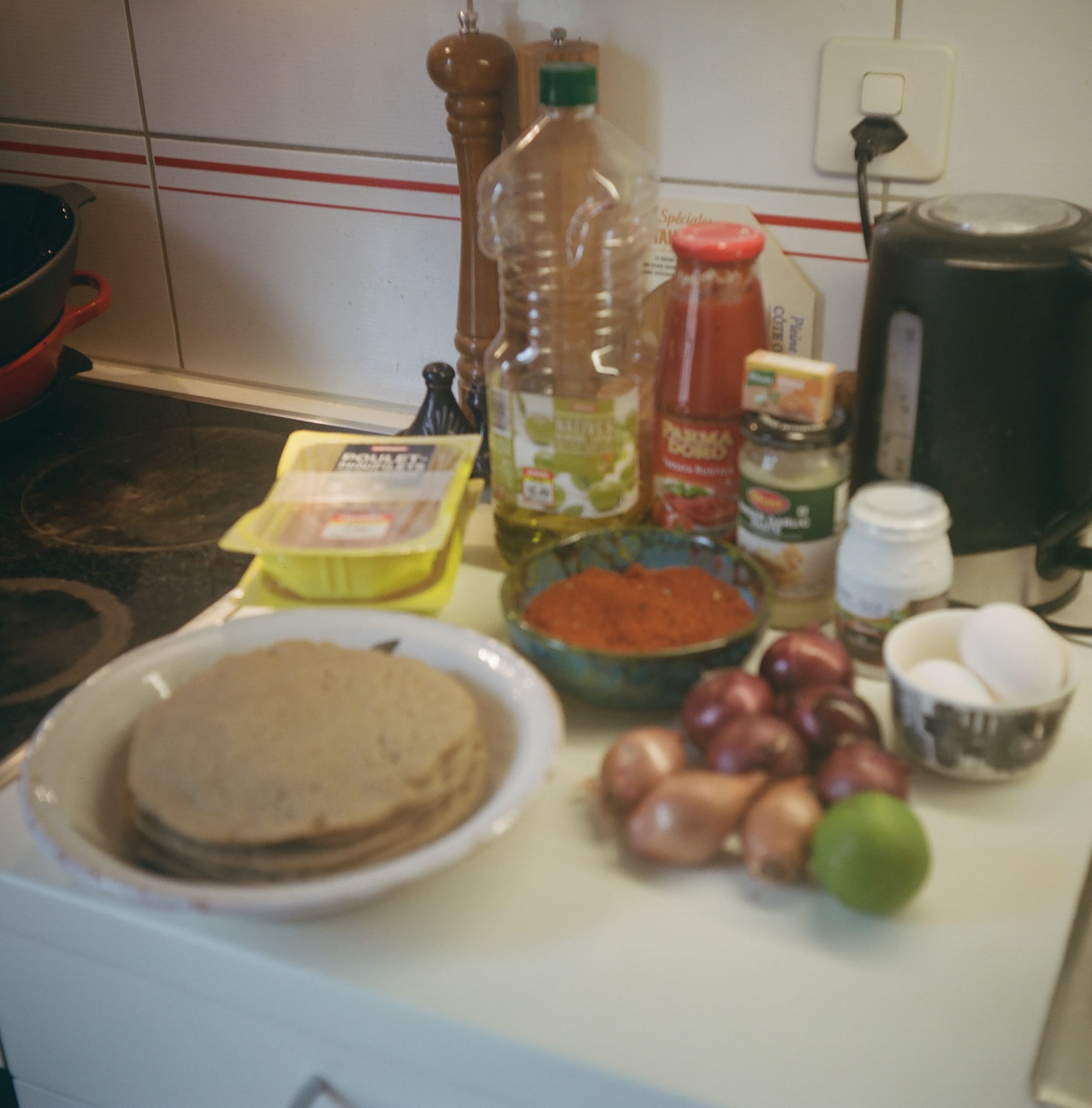
Injera is a tricky flatbread to make. Traditionally cooked on a hot stone called a mitad, the batter is poured in a spiral which gives it the signature consistency required to sop up Ethiopian food in lieu of any other utensils. Our recipe uses a nonstick pan with a lid instead. Pure teff flour injera is most valued in Ethiopia. While Ethiopian food is consumed with the hands, licking one’s fingers is considered a faux pas.
It is unclear how long doro wat has been a part of Ethiopia’s rich culinary heritage. Aster Ketsela Belayneh, the author of The Recipe of Love: An Ethiopian Cookbook and the former owner of an Ethiopian restaurant called Addis Ababa on Toronto’s Queen Street West, writes that the dish “goes back to the days of the Axumite kingdom,” which existed in present-day northern Ethiopia from 200-800 AD.
However, doro wat may in fact be a more recent addition to Ethiopian tastes, dating back a mere 700 to 800 years. Some archeologists have found what they believe to be chicken bones from the era. Though the late British archeologist Stuart Munro-Hay, who focused on ancient Ethiopia, the horn of Africa and southern Arabia, points to the fact that only one or two pottery figures of birds exist from Axumite times. Munro-Hay also noticed an absence of chicken in the rock art of the Axumites.
By contrast, a fifteenth-century document known as the Serata Gebr that details Ethiopian imperial banquets makes mention of the presence of chicken at these feasts. Translated, Serata Gebr means “The Order of the Feast,” and the word “wot” only appears once, written in ancient form as wäsheh and described merely as “one large bowl of turmeric sauce.” However, turmeric would produce a dish milder than doro wat known as doro alicha. Written in Ge’ez, an ancient language of Ethiopia and translated by German Manfred Knopp, it is understood that doro wat may be referred to by another name or in proto form in the text as Ethiopians had not yet invented berbere spices.
These days, Ethiopia’s population of 114 million is home to over 80 ethnic groups, the largest of which are the Oromo, Amhara, Somalis and Tigrayans who combined comprise 74% of the population. Doro wat does not differ significantly among these groups, according to Abbebe Kifleysus, a scholar and author of The Construction of Ethiopian National Cuisine.
There are however variations and as is commonly the case with national dishes, recipes are passed down through generations and every family has its own recipe. Ethiopian Jews have their own version which they like to serve on the sabbath known as sanbat wat (shabbat wat) which uses vegetable oil instead of niter kibbeh to avoid mixing meat and dairy. Contemporary celebrity chef Marcus Samuelsson, a native of Ethiopia who was raised in Sweden but now lives in New York where he operates Harlem’s Red Rooster, features doro wat tacos in his restaurant.
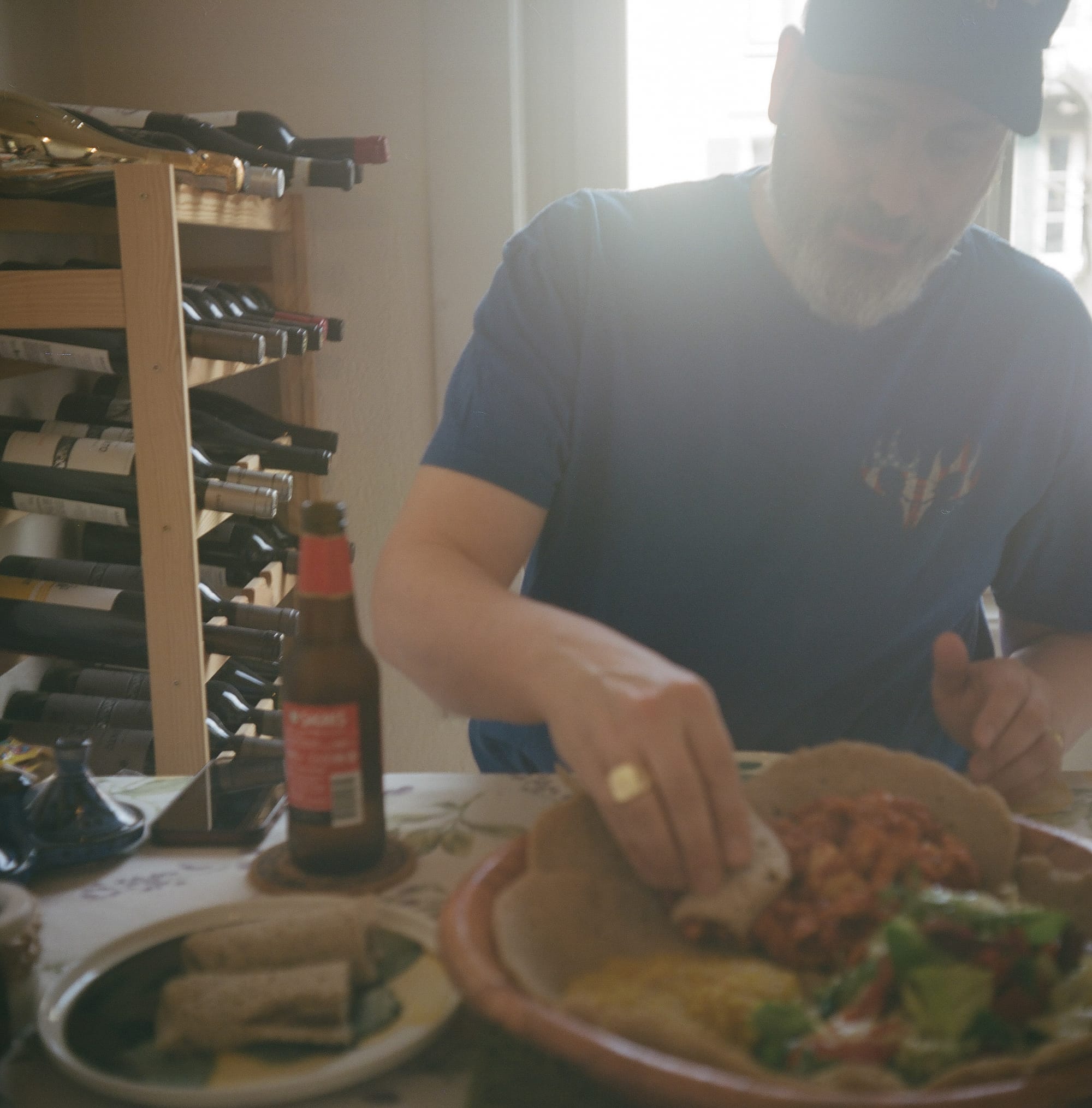
Recipe
Ingredients:
For the injera (step 1):
1.5 cups of teff flakes, ground coarsely with a pestle and mortar
Half a cup of buckwheat flour
7 grams or one packet of dried yeast
1 tablespoon sea salt
1 teaspoon baking soda
2.5 cups distilled or natural drinking water (such as Vittel) with little to no fluoride or chlorine
1 tablespoon apple cider vinegar
For the second part of the injera mixture (steps 3-5):
One cup boiling water
Sunflower seed or any other neutral cooking oil
For the berbere spice mixture (step 2):
4 tablespoons ground hot chili pepper
3 tablespoons sweet paprika
1 tablespoon salt
1 teaspoon coriander
2 cardamon pods
Half a teaspoon of fennel seeds
Half a teaspoon of nutmeg
2 dried juniper berries (or allspice if available)
1 clove
1 teaspoon turmeric
3 whole black peppers
Half a teaspoon cinnamon
A bit of fresh shredded ginger
For the doro wat (steps 6-13):
500 grams of chicken sliced into smaller pieces
1 lime or lemon
5 red onions
3 shallots or 1 whole head of garlic
2 boiled eggs
1 tablespoon of olive oil
1 tablespoon of ghee
Half a cup of chicken stock
Half a cup of tomato sauce
1 tablespoon of garlic ginger paste
Step 1: Begin the day before for the injera. Mix the dry ingredients. Then add water and apple cider vinegar. Combine and cover loosely with plastic, allow to sit overnight in a warm but dry place. Do not refrigerate.
Step 2: The next morning, make your berbere spice mix by combining all spices and grinding together with a mortar and pestle. Set aside.
Step 3: Returning to the injera, combine one cup of boiling water with half a cup of the injera mixture. Once paste-like return to the larger injera mixture and combine again using a wooden spoon. Cover the injera batter again loosely with plastic.
Step 4: Coat a non-stick pan with a thin layer of oil, using a paper towel to spread the oil and dispel any excess oil.
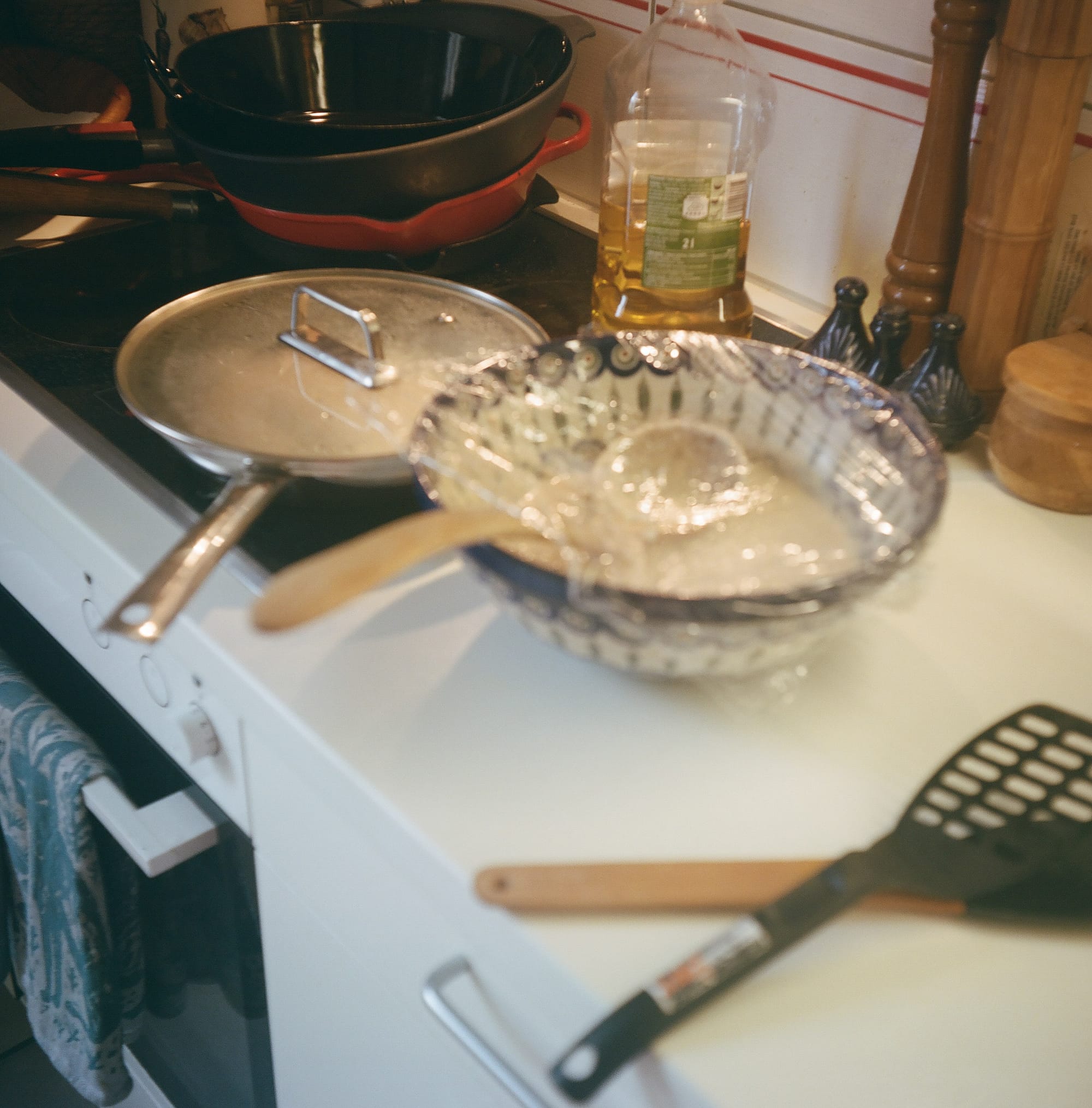
Step 5: Ladle the injera mixture into the pan on a medium-high heat, tilting the pan after pouring to spread the injera batter as thin as possible across the surface of the pan. When surface area begins to bubble, cover with a lid to steam. Remove from heat with a spatula and set aside, using paper towels as needed to absorb any excess oil and separate the injera. Repeat until the injera mixture is gone and all of the batter becomes injera!
Injera should have a thin consistency between a crepe and a pancake. After all the injera is made, remove any layers of paper towels from cooked injera and transfer to a new plate or bowl, stacked one on top of the other. This is to prevent the injera from sticking to the paper towels.
Step 6: Turning to the doro wat, rinse and paper towel dry the chicken in cold water. Put in a bowl and squeeze juice from one lime or lemon onto the chicken. Add one tablespoon of the berbere spice mix and refrigerate.
Step 7: Dice five red onions add to a stew pan. Place on low heat with one tablespoon of olive oil. Wait until onions become soft and translucent.
Step 8: Chop three shallots or one whole head of garlic. Add to the onions on low heat along with two tablespoons of berbere spice mix. Stir and allow to simmer approximately 10 minutes.
Step 9: Take out chicken and ghee from refrigerator and set aside.
Step 10: Bring two eggs to boil on a medium heat.
Step 11: Add one tablespoon of ghee (or more, if you prefer) to the onions and berbere spice mix and allow to melt. Stir and add chicken. Cover for approximately two minutes. Then add half a cup of chicken stock and half a cup of tomato sauce, and two more tablespoons of berbere spice mix as well as one tablespoon of garlic ginger paste. Stir, cover and reduce to lowest heat.
Step 12: Check on the chicken after half an hour. If not desired consistency, add more berbere mix or ghee by the tablespoon full, stirring in to see if desired effect is achieved. When chicken is soft enough to break apart it is done. Add the peeled, hard-boiled eggs and leave uncovered a few minutes.
Step 13: On a wide communal plate or bowl, arrange the injera to cover the surface. With remaining injera, cut in half. Roll up and place on a separate plate.
Step 14: Ladle the doro wat onto the plate with the surface covered in injera. Use a serving spoon to break up the egg. You can also add salad or lentils on top of the injera, your communal Ethiopian platter. Use hands and rolled-up injera to scoop up the doro wat and other possible dishes to eat. Bon appetit!
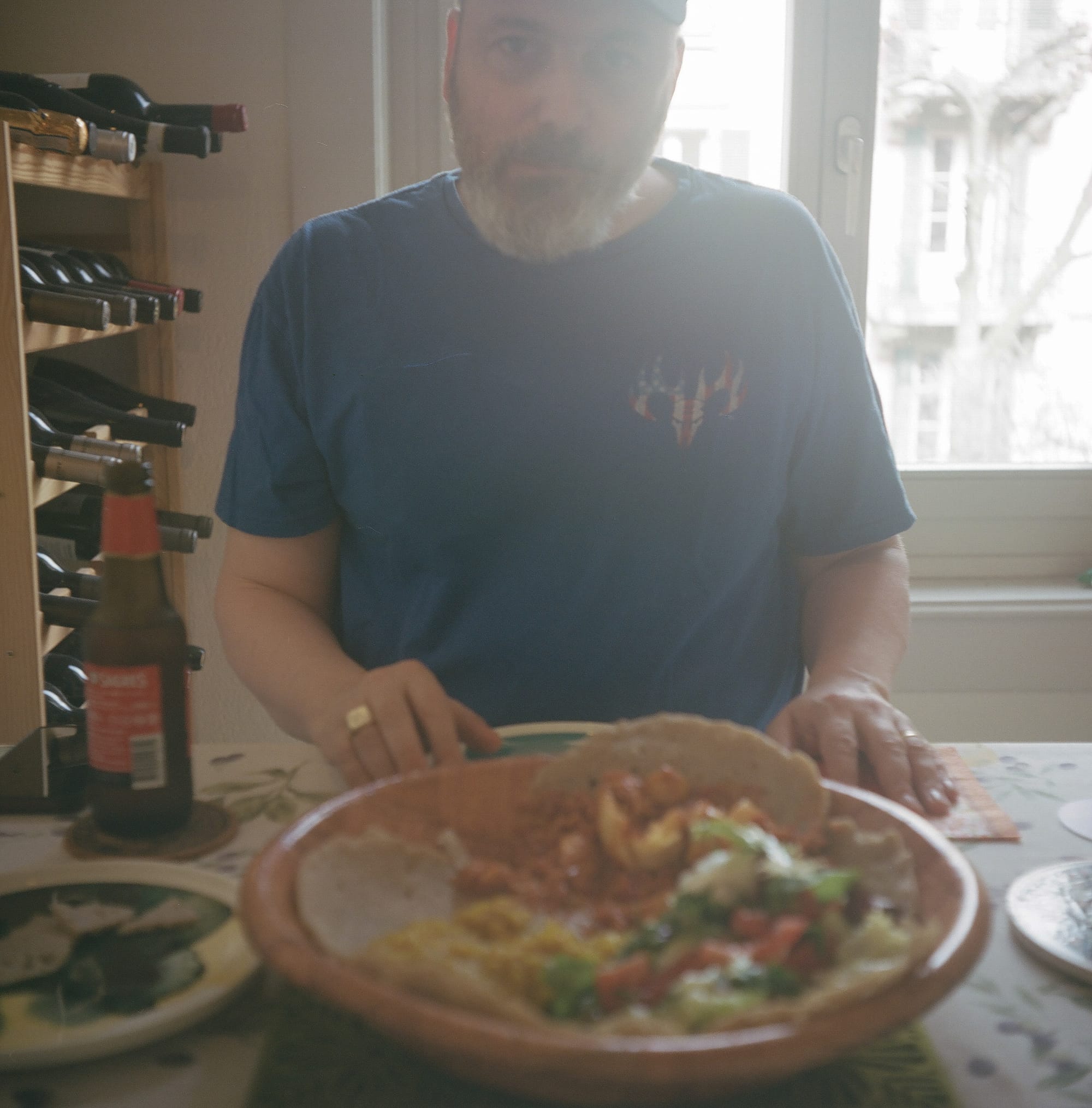
Tips, tricks and notes:
I found teff flakes and buckwheat flour at the Alnatura organic grocery chain owned by Migros.
For baking soda (not baking powder, which can be used as a substitute in a pinch) and apple cider vinegar, the African food store Tropical Zone at Herzogstrasse 16 in Bern did the trick.
Some of our TikTok viewers (currently this video is our most popular on the platform) had thoughts and shared knowledge as opinions ranged on our recipe and efforts:
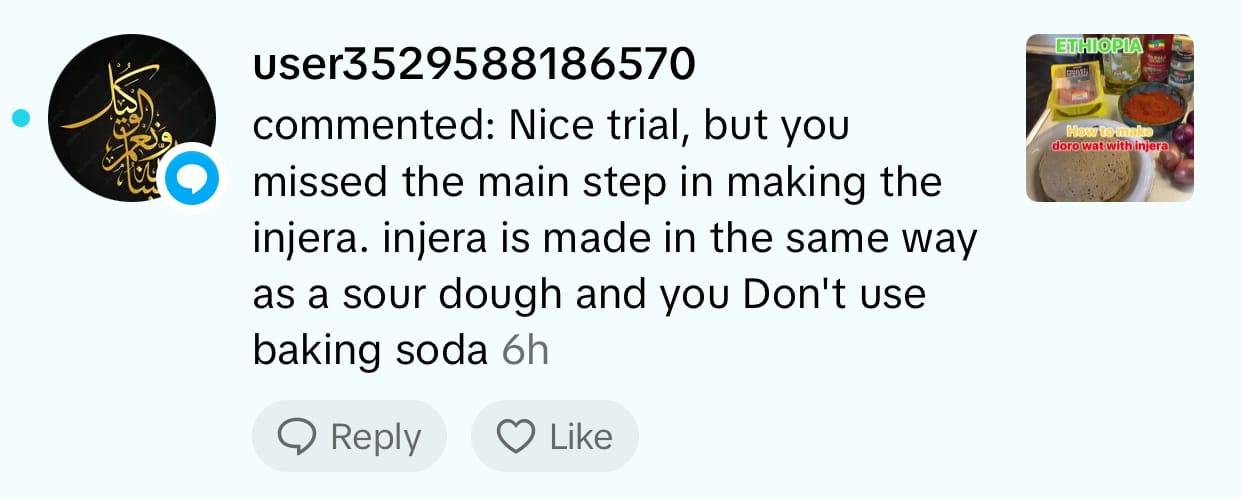

Learn where to eat Ethiopian food in Switzerland.
Follow our social media pages @swissglobaldining on Instagram, TikTok and YouTube